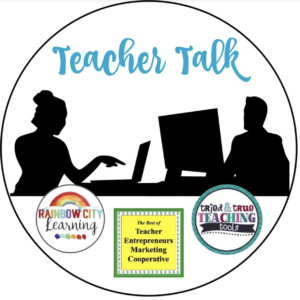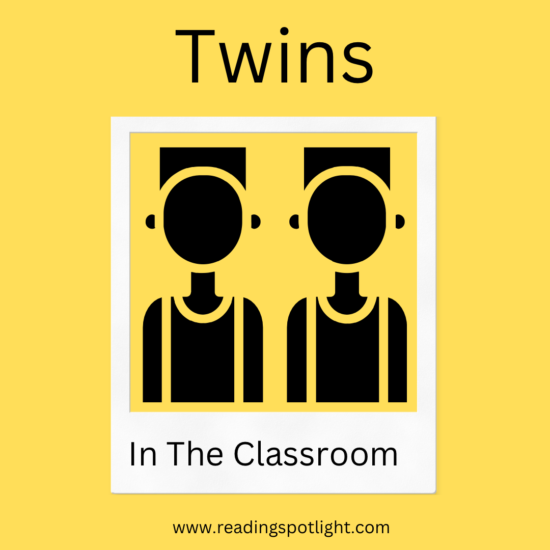Some of my educational experiences with twins in the classroom have been unique and memorable.
My initial encounter came with with Diane and Debbie in my first year as a ninth-grade English teacher. It was disorienting–they seemed so… identical. In the school hallways, I never knew to whom I was smiling hello. In class I placed them on opposite sides of the classroom. When they stood side by side, I could just barely notice that Diane’s left eye was a tiny bit smaller than her right eye. Grades were remarkably the same, even most errors! I had to make a special effort to encourage different ideas for compositions. This experience made me inclined to encourage parents to ask that their twins be placed in different classrooms. I believed this would encourage individual educational and psychological development. Of course, parents were dead set against it. I think it was because of both the intimacy between twins, and also, the homework situation.
Darren and Darryl were in my first class of struggling readers. They were also identical, and I found it difficult to distinguish between them, too. Although they were in the same classroom, I was able to separate them for “pull-out” Special Reading classes since I had such a large number of poor readers to address in their regular sixth-grade classroom. Once again, I could not recognize each one in the hallways, but side-by-side, Darryl was a bit heavier than Darren, maybe about five pounds—hard to distinguish, but possible, when next to each other. Like so many of my students over the years, they disappeared the following year. Off to another school, I supposed. Leases or other issues, I wondered.
Imagine my surprise when the following year, they came back to visit me during classes. I was very happy to see them. They had grown considerably taller. And smarter, too! They knew my routine of leaving my tiny classroom each half-hour to return students and pick up my next pull-out class. Hurrying back after getting my next class, I was surprised to see that they were gone, although I thought we had agreed to talk more. At first, I assumed that they went to visit another teacher. After I returned the next class, however, a terrible thought occurred to me: I checked my purse which I always kept unlocked in the top drawer of my filing cabinet, and… yes, of course, my money was gone. They left the wallet, though.
Another encounter with twins occurred when I transferred to primary school. These two girls were not identical. Tracy was small-framed, with long, light brown hair, and very shy. Rachel was large, heavy-set, with very dark brown hair, and a very smart mouth. I saw her the first time as I entered the primary building. She was facing the wall outside of her first-grade classroom, placed there by her teacher who could simply not put up with her antics that day. I wrote about her in this post
Rachel was a handful, but I wondered why Tracy had also been retained since her reading skills were almost at grade level. I learned that the the parents had refused to allow them to be separated. When the first-grade teacher insisted that Rachel be retained, parents then insisted that Tracy also be retained in the same class. The Head Teacher acquiesced. (We had no principal in this 10-room school.) Needless to say, this just reinforced my ruminations against twins being in the same classroom.
My most recent encounter with twins came with George and James, who were also not identical. George was taller than James, and he had lighter skin and hair. I had tutored their father many years before. He asked me to tutor George, who was in third grade, but was barely reading at a first-grade level. I assumed that he would ask me also to tutor his twin, who was also in a Special Reading class, but the father did not ask. He had been considering whether to pay the rather high cost of eye movement instruction as a solution to George’s problem. I told him that the research I read as a reading specialist indicated that a cause and effect association is complicated, and eye movement training is rarely considered effective. I explained that teaching the actual act of reading might be a better use of after-school time than teaching eye movement patterns. You can read some recent research about it here:
The Relation Between Reading Skills and Eye Movement Patterns in Adolescent Readers
I tutored George for several years, in my home, in his home, and virtually, during COVID. I discovered teaching virtually was easier than expected, one-to-one, on Facetime. I released George last year, and I felt that this tutoring experience was extremely rewarding and not as difficult as expected. Of course, it helped that George took all instruction very seriously. He trusted me. Like father, like son. Genetics.
If you are interested in a set of Tall Tale Grammar Review Stories that use an identical format, please consider:
Grammar Review: The Summer Games
© Reading Spotlight 2024

Here are some interesting posts about education from my friends at TBOTMC
!– start InLinkz code –>


